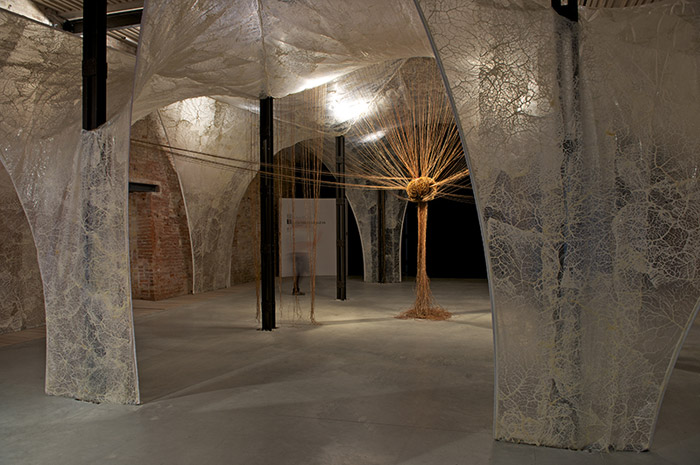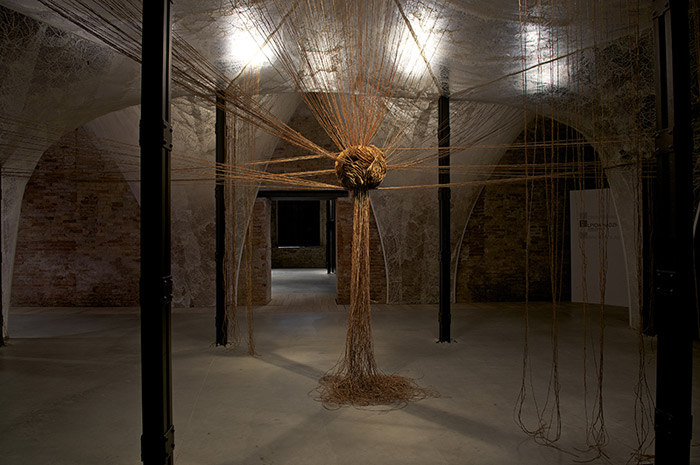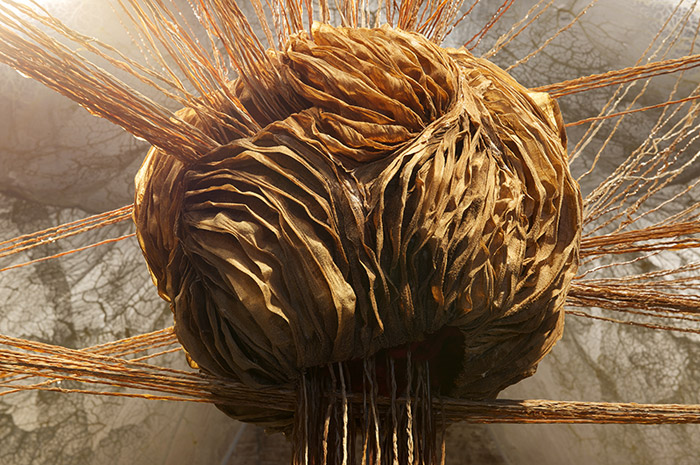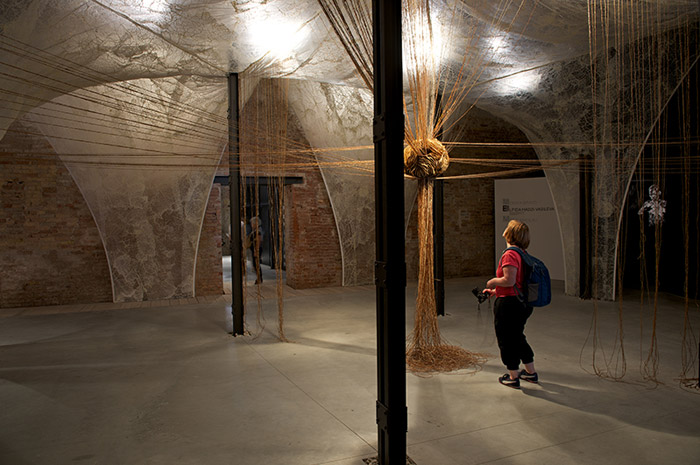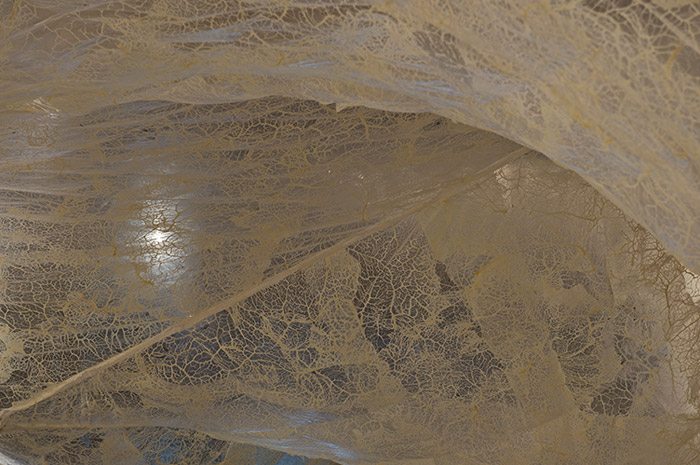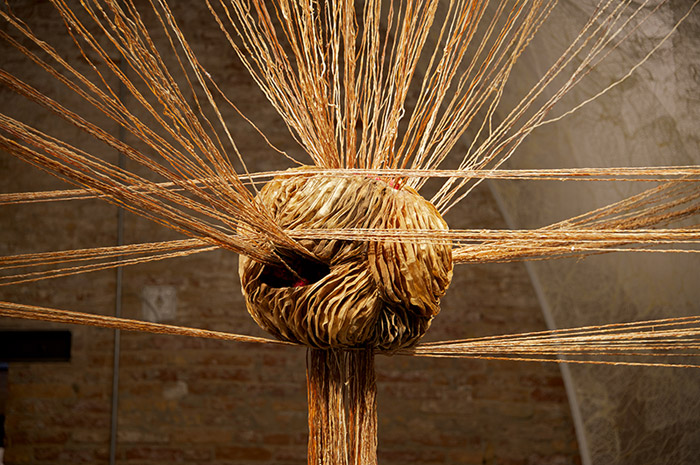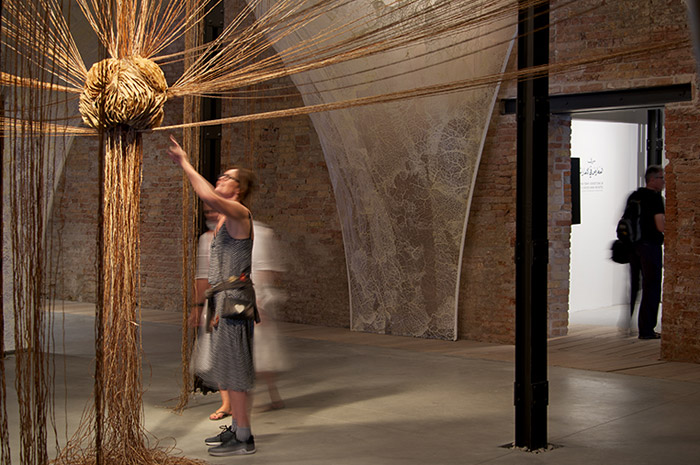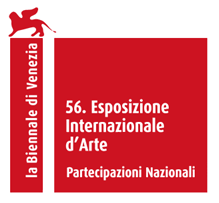
Haruspex
Pavilion of the Holy See
56th International Art Exhibition - La Biennale di Venezia
In the Beginning … the Word became flesh
INVITED ARTISTS - Monika Bravo, Elpida Hadzi-Vasileva and Mario Macilau
Arsenale di Venezia – Sale d'Armi nord
9 May – 22 November 2015
Elpida Hadzi-Vasileva was commissioned by Dr Micol Forti, Head of the Modern and Contemporary department of the Vatican Museums to make a new work for the Pavilion of the Holy See at the Venice Biennale 2015.
In the Beginning ... the Word became flesh is the theme chosen by the Commissioner Cardinal Gianfranco Ravasi, President of the Pontifical Council for Culture, at whose request the theme of the “Beginning” has been further developed from the 2013 edition’s reference to Genesis to that of the Prologue of the Gospel of John. Curated by Micol Forti, the structure of the Pavilion is focused on two essential poles: firstly, the transcendent Word, which is “in the beginning” and which reveals the dialogical and communicative nature of the God of Jesus Christ (v. 1-5); and then the Word made “flesh”, body, bringing the presence of God in humanity, especially where it appears injured and suffering (v. 14). The encounter of these “vertical-transcendent” and “horizontal-immanent” dimensions is the heart of the research. The two “tables” of the Prologue of John’s Gospel are the basic inspiration for the artistic creation.
“In Haruspex, Elpida Hadzi-Vasileva has worked with some very raw material indeed: the caul fat of the pig creates the canopy and walls of her ‘tent of meeting’. Once a membrane for the pig’s gut, it is now the membrane of a sanctuary-like space which may repel or may protectively envelop. This is then criss-crossed by ropes woven from the intestines of sheep, and these seem to bind in two possible ways: by connecting and supporting (as the ligaments of this space), or by constraining and entrapping (as a net or mesh). Finally, supported by these ropes, or caught in them, is the suspended heart of the piece, which is literally made of stomach: the fascinatingly-layered ‘omasum’ (or third stomach, out of four) of the cow....
It would be artistic laziness to let mere choice of material do all the semiotic work of a piece. Haruspex is, by contrast, highly-wrought, hand-crafted with a great investment of labour and time, and fashioned into a whole which is both aesthetically arresting and charged with possible meanings...
But Hadzi-Vasileva does not simply draw us into a deeper relationship with fleshiness in this work (the fleshiness, or corporeality, which the Word of God assumed in the incarnation). She makes flesh eloquent. In this respect, flesh becomes ‘word’ in her artistic practice...”
Selected text by Ben Quash from In the Beginning...the world became flesh. The full essay can be read here.
Downloads:
Press release (pdf)
Commissioner Ravasi text (pdf)
Curators text (pdf)
Prologue parable (pdf)
Catalogue preview (pdf)
Supporting ELPIHV:
- Curator of the Pavilion: Micol Forti
- Architect: Pero Bojkov
- Taxidermist: David Leggett
- Curator UK: Gill Hedley
- The Artists Agency
- A&H Furnishings
- Catalogue text: Prof Ben Quash
- Photo & Video: Bernard G Mills

